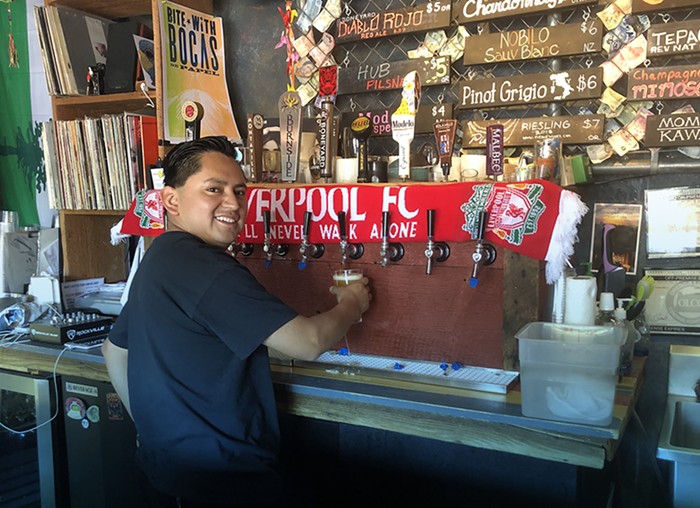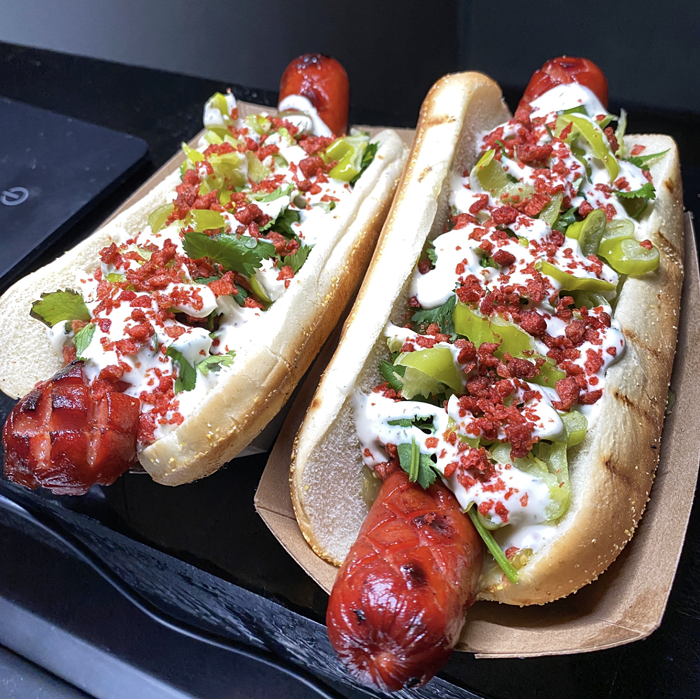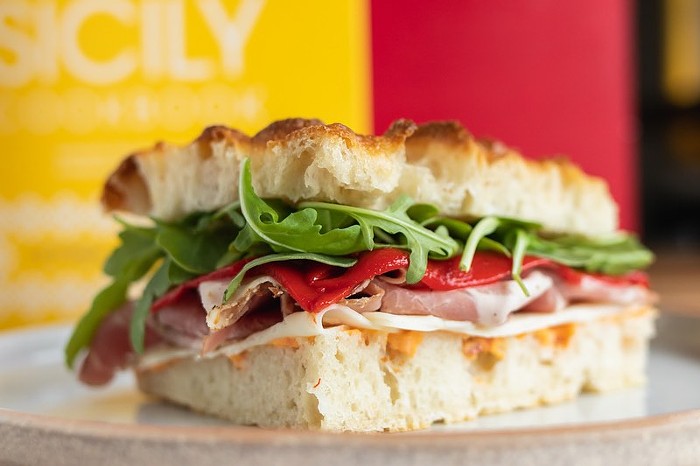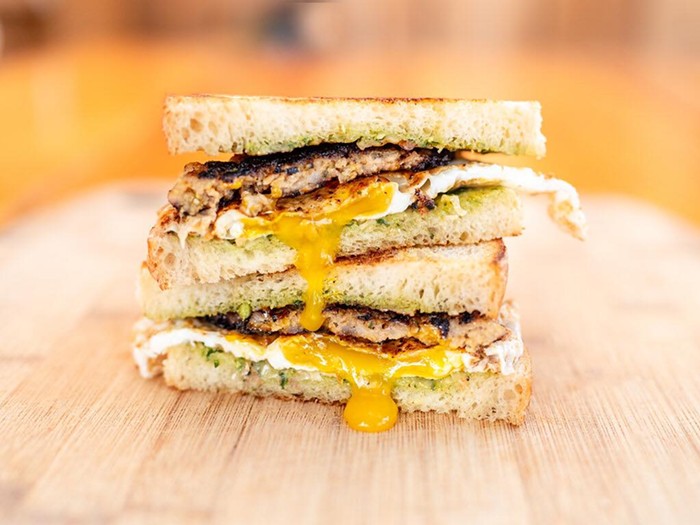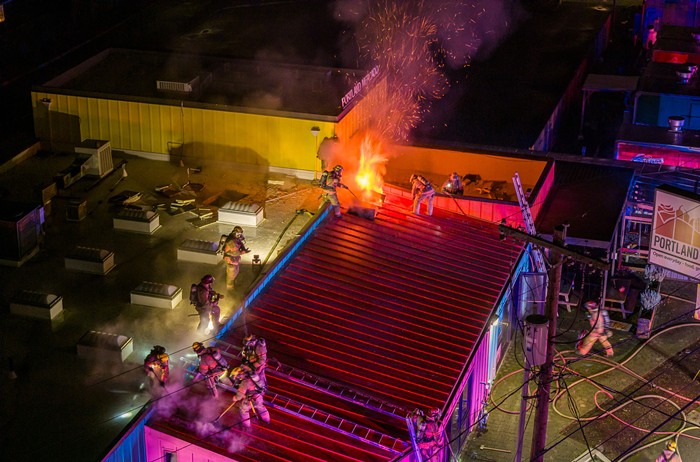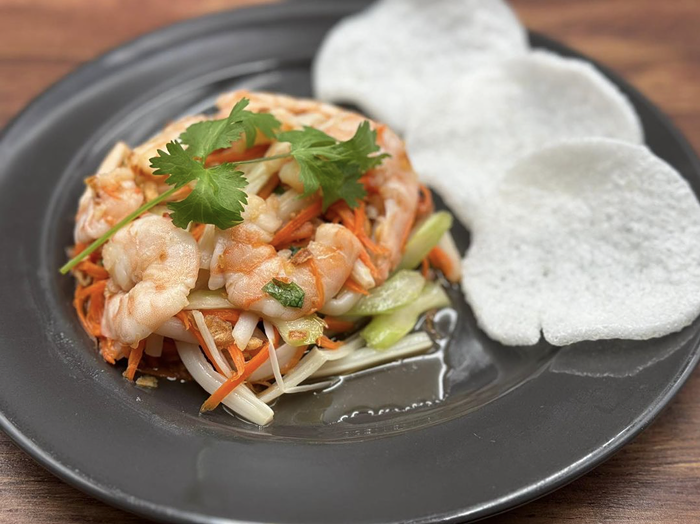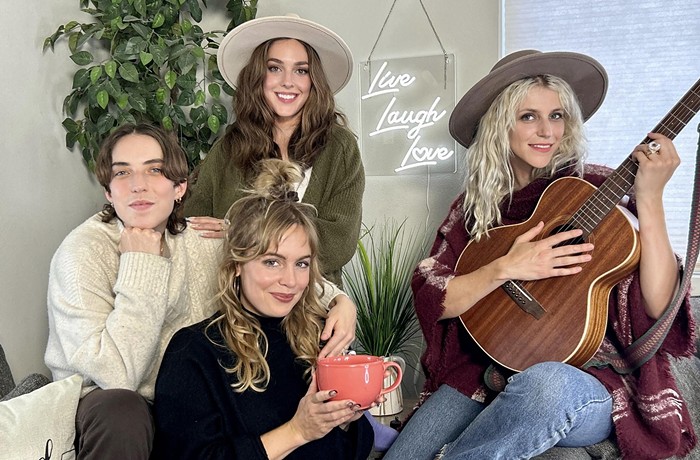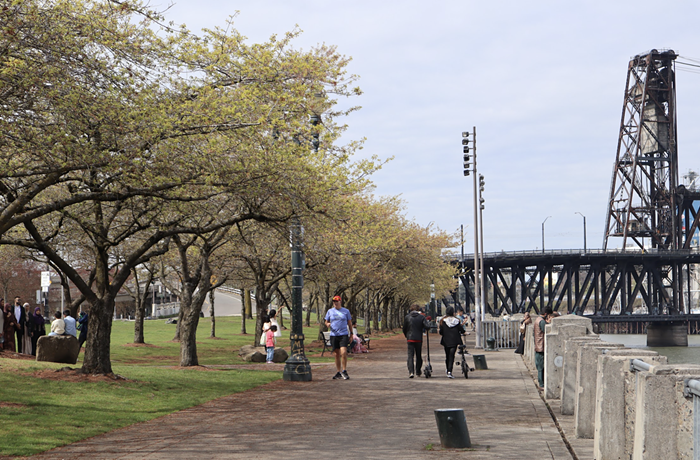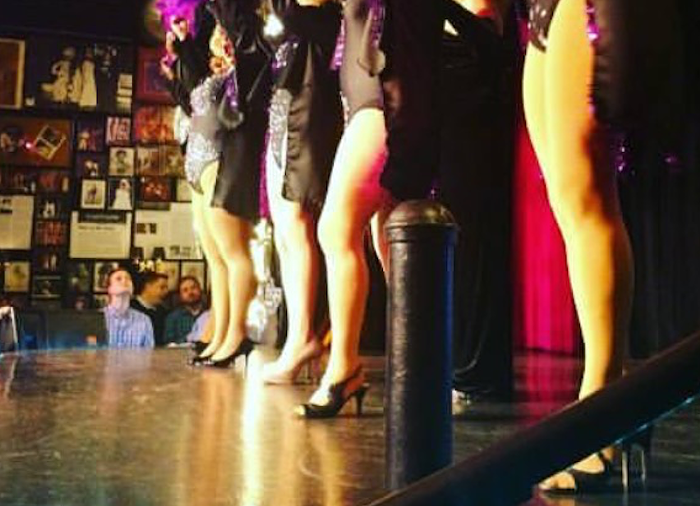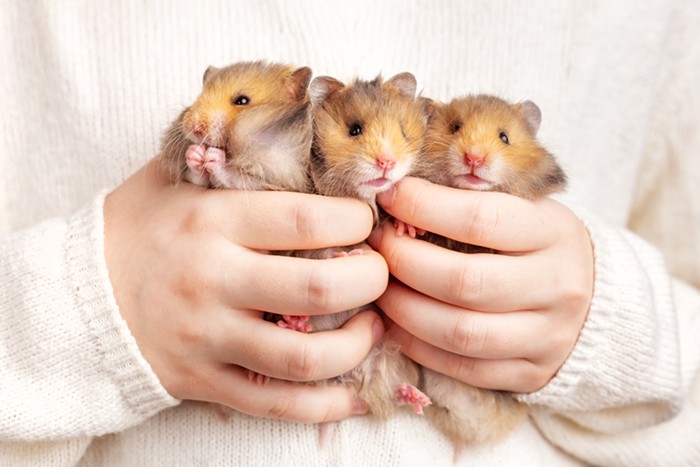I’ve crushed my fair share of fruit beers, ciders, and radlers during the hot Portland summer months, but I don’t think I’ve ever had a beer-adjacent drink as refreshing, tangy, or memorable as the tepache they serve at Barrio, the small beer-and-wine bar inside the Portland Mercado. A one-to-one mixture of fermented pineapple and Modelo with a spicy salt rim, the drink came highly recommended by bar manager Ben Citalán.
Originally from Guatemala, Citalán (along with owner Chris Shimamoto) has overseen Barrio’s drink selection for the last two years. Since opening on Southeast Foster in 2015, the Mercado has become a favored destination for those seeking a variety of authentic Latin American dishes served by food carts in a casual setting. The Barrio has gained its own reputation as a cozy neighborhood bar with local art on the walls, buzzy music in the speakers, and drink specials, like tepache, that you can’t find anywhere else in town.
For the Mercury’s craft beer issue, I recently sat down with Citalán to talk about tepache, the Latin American beer scene, and why Modelo will always have a spot on the Barrio’s taplist.
MERCURY: What do people come to the Barrio for that they might not be able to find at the average Portland bar or taproom?
CITALÁN: Our specialty drinks are tepache, micheladas, and sangria. People come to our bar just for these drinks—they’re very authentic, and very tasty. Micheladas are like a version of a Bloody Mary, but with beer—a mixture of Clamato juice and spices and lime, and the rest is beer. It’s a good drink for Sundays.
We can sell all types of beer and wine, but these drinks are what make us authentic, that people really love. The reviews that you can find on Yelp or Google are all about micheladas and tepache—people give us five stars just for that.
Right, and tepache is what I’m drinking right now—it’s delicious, by the way. It’s a mixture of Reverend Nat’s cider and beer?
It’s actually not cider, it’s fermented pineapple. The way Reverend Nat’s makes it, they press it like a cider, so it’s very thick and very heavy. So this is why we do half of that and half of beer, so it makes it a very refreshing drink, and also low in alcohol—only about four percent, not too bad. And it’s pretty sweet.
And actually, out of the entire United States, we are the only bar that sells a lot of Reverend Nat’s Tepache.
Really, in all of the US?
Yes, we have a partnership with Reverend Nat’s. They might sell it to other breweries and other bars, but based on the numbers, the owner told us that we’re the only bar that serves a lot of tepache in the entire country. It’s very interesting.
People don’t always know about tepache, so I usually have to strongly recommend it, and we’ll give them a sample in a small glass. And once they try it, people are into it.
Can you walk me through the basics of your beer selection? It looks like you have a solid mix of Mexican lagers and Pacific Northwest favorites.
The way we select our beers is, it’s all about what the customers like. Our tap list usually has an IPA, pale ale, red ale, pilsner, and then we have Modelo. That’s the one beer we don’t really rotate—we’ve got to have Modelo on tap. People love Modelo on tap.
We also have a selection of bottled beers, like Pacifico, Corona, and Victoria. We have ciders in the bottle, and we just started doing CBD water from Boneyard. We try to do a little bit of everything.
Sometimes we have Negra Modelo—we always have it in the bottle, but sometimes we have it on tap for special occasions like Dia de los Muertos or Cinco de Mayo. We put it on tap, and it runs out very quick.
In the past few years I’ve noticed a lot of Pacific Northwest breweries have come out with their own spin on the Mexican-style lager (Ex Novo’s Most Interesting Lager in the World, Full Sail’s Sesión Cerveza, Pelican’s Pelicano Extra Cerveza Lager, etc.). Have you ever considered putting one of those on tap?
We do have a lot of breweries that want us to sell their Mexican-style lager beers. I don’t want to say it’s impossible, but it’s hard to substitute Modelo Especial for another Mexican-style lager. I just found it hard, because we’re a small bar and we don’t have a lot of beer taps, so for us it’s hard to make a selection.
Modelo is a beer that represents us. If you don’t have Modelo at a Mexican beer-and-wine bar, it might be hard to sell other Mexican-style lagers. It’s a great idea, but competing against one of the biggest beers in the entire country like Modelo is very hard.
I’m not saying I can’t have it—if it tastes good, it tastes good, and I’ll have it. Burnside Brewery, when they were still in business last year, we had our anniversary party in April and they brought their Mexican-style Kartel lager. It was very tasty, so that’s probably the one I would pick. Unfortunately they are not in business anymore, so I will have to try some other ones.
Is Modelo also popular throughout Latin America, outside of Mexico? What is the go-to beer to drink in Guatemala?
Modelo is the one beer you could find anywhere. The rest of them—Corona, Victoria—are not as popular as they are in Mexico.
In Guatemala, we drink an amber that’s very popular called Gallo, like “rooster.” Many of the beers that are popular in Latin America are either lagers or amber style, because when the Germans started migrating to Latin America [after World War II], that’s how the beer industry started there. Germans after the war went to Guatemala and other countries, and they knew how to make beer in Germany. So once they got settled, they started to make their beers, and Gallo is one of those beers.
And then we have smaller breweries that are starting to become popular, too. That was a big, big shock because they started to compete with the biggest ones in Latin America. Everything was monopolized, but then these smaller breweries started. So if you go to Guatemala now, you might find breweries that just opened one or two years ago. It’s becoming a thing right now.
The Barrio honestly feels unlike any other bar I’ve been to in Portland—it almost feels like you’re at this big, welcoming house party, and that’s really an ideal environment for drinking good beer. How do you and Chris achieve that feeling?
I’ve been to so many bars, and it’s true. We don’t have a TV in the bar, because TV distracts people. Here, it’s about making relationships, getting to know your neighbors, and having a good time. We have a lot of neighbors who love this place, and a lot of regulars.
And what really, really makes my day is when I see diversity at the bar. I’ve never seen such a big mix of people that come from Latin America. One day I was looking around, and I had a table from Spain, and then my friends from Argentina, some Colombians over there—I’m, like, this is amazing. No other bar has been as diverse as this one, and that’s why people like to come here. Our customers come from all over the world.
Even locally, we have people come from Beaverton or Vancouver just to eat from the food carts. Because it’s hard to find this type of food—if you are from Puerto Rico, for example, this is one of the only places in town to find Puerto Rican food. So the Puerto Ricans come here to support it, and then they want to sit here in the bar and get a drink.
This is a very special place for them. It’s like a little Latin American country in the middle of Portland.
